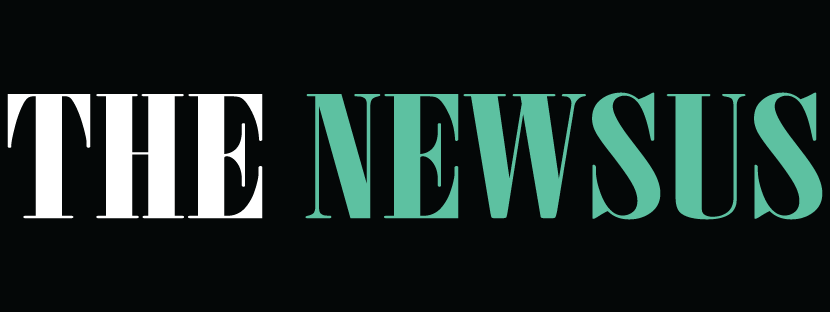Research Reveals Your ‘Breath Print’ Is Unique, and the Buteyko Breathing Center Shows You How to Strengthen It
Have you ever noticed that your breathing has a rhythm, a feel, a certain quality, almost like your own personal signature?...

Have you ever noticed that your breathing has a rhythm, a feel, a certain quality, almost like your own personal signature? If you’ve spent any time working with the Buteyko Method, this probably isn’t news to you, but what is exciting is that science is catching up.
A groundbreaking study from the Weizmann Institute of Science showed 96.8% accuracy in identifying individuals based on their nasal airflow patterns, collected over 24 hours. What’s more, those patterns remained stable over a two-year period.
It’s interesting to think about, isn’t it? Just as your voice reveals your identity, so does your breath. That’s a remarkable level of stability and individuality — and a strong affirmation of what Dr. Buteyko observed decades ago: our breathing reflects our inner condition more than we often realize.
What the New Science Says
The research doesn’t just confirm that breath is unique — it underscores what many of us already experience in practice: that breathing reflects the body’s inner workings, often before symptoms appear.
Let’s look closer.
- Unique Patterns: By analyzing inhale and exhale duration, sigh frequency, resting pauses, and subtle fluctuations in airflow, the researchers could accurately identify individuals from a 100-person group. The level of precision was striking, nearly 97% accuracy using only their breath data.
- Long-Term Stability: These patterns weren’t short-lived. Even after two years, the same individuals showed consistent breath prints. This suggests that our breathing rhythms are not only personal, but remarkably stable over time.
- Trait Correlations: Certain breathing characteristics were linked to mental and physical traits. People with higher anxiety levels showed shorter inhales and irregular pause patterns. Others displayed rhythms connected to sleep-wake cycles, body mass index, and concentration. In other words, the breath may silently reveal how we’re coping long before symptoms become obvious.
- Brain-Wide Coordination: The study highlights that breathing isn’t just a function of the brainstem; it’s connected to language centers, emotional regulation, memory processes, and motor control.
- Potential Diagnostic Use: If breath patterns hold this much information, they could one day be used to detect health issues early, before a condition becomes visible. Researchers speculate that breath print analysis might help identify conditions like sleep apnea, anxiety disorders, or even early-stage neurological changes, all through a non-invasive method.
For longtime Buteyko practitioners, this study offers scientific confirmation of what Dr. Buteyko taught decades ago: how we breathe is inseparable from how we function — physiologically and mentally.
Ancient Traditions Already Knew This
While science is only beginning to map and measure the uniqueness of breath, the idea isn’t new. In many ancient cultures, the breath wasn’t seen as just air moving in and out of the body; it was a form of intelligence, a rhythm that reflected the state of the mind, body, and spirit.
In ancient India, for instance, traditional healers were said to read a person’s health by listening to their breath. Some could reportedly predict the gender of an unborn child or even foresee a person’s health trajectory based on breath patterns alone. They didn’t rely on devices — just awareness refined over generations. They relied on trained awareness, an art passed down through generations.
These observations were not focused on uniqueness in the modern biometric sense. Instead, they paid attention to how subtle shifts in the breath (its rhythm, sound, effort, or timing) correlated with inner balance or disorder. What modern research now refers to as a “breath print,” many ancient systems already regarded as a window into the body’s harmony or imbalance.
While Dr. Buteyko didn’t use the language of “breath prints,” his clinical observations reflected the same principle. That each condition presents with its own breathing pattern, and restoring that pattern is key to healing.
The Weizmann study offers scientific confirmation of what both traditional and Buteyko-based perspectives have long proposed: that breath isn’t just an unconscious action. It’s a living diagnostic, a clue to how the entire system is functioning.
And perhaps more importantly, it can be changed.
What Makes a Breath Print “Dysfunctional”?
Uniqueness doesn’t equal optimal function. In Buteyko work, we aren’t concerned with whether a breath is different — we look at whether it supports or disrupts balance. A unique breath pattern may be broadcasting stress, inflammation, or over-breathing — and that’s what needs addressing.
In the Buteyko Breathing framework, uniqueness isn’t the issue; dysfunction is. A breath print becomes problematic when it strays too far from what the body actually needs to thrive. Think of it like music. A unique melody isn’t necessarily harmonious. Breath patterns out of sync with physiological needs create strain — and that strain is often invisible until it accumulates.
And for many people, it’s not. Over-breathing, mouth breathing, sighing, noisy inhalations, chest lifting… these are all signs of a breath print under strain. They don’t just show up randomly. They develop over time in response to stress, inflammation, poor posture, and unconscious habits.
Let’s say someone’s breath print includes frequent mouth breathing, especially at night. It might also involve audible inhaling, short exhales, or constant sighing throughout the day. From the outside, these patterns don’t seem dramatic. But from the inside, they’re slowly shifting the chemistry of the body, reducing CO2 levels in the lungs, tightening airways, and amplifying stress signals to the brain.
So yes, your breath print is unique. But it may also be broadcasting distress. And if so, it’s not just a reflection of your habits; it’s part of the problem.
Fortunately, it’s also part of the solution.
What Does a Healthy Breath Print Look Like?
There’s no single ideal breath print, and most readers here already know this. But certain traits consistently show up in breathing patterns that support healing, resilience, and nervous system regulation.
From the perspective of the Buteyko Method, a healthy breath print reflects these key traits:
- Nasal Breathing Only: Breathing through the mouth bypasses filtration, dries out airways, and increases volume unnecessarily. Healthy breath prints are nasal by default.
- Silent and Invisible: The shoulders don’t lift. The chest doesn’t rise. Breathing is almost imperceptible. If others can hear or see it, it’s likely too much.
- Steady Rhythm: There are no chaotic sighs, gulps, or irregular spikes. A calm, rhythmic breath print signals balance.
- Mild Air Hunger: When breathing is reduced slightly, it may bring on a gentle feeling of air hunger, a sign that CO2 is being retained. This is not distressing, but rather a helpful cue.
- Adaptability: A strong breath print remains steady during physical activity, emotional stress, or heat. It doesn’t default to mouth breathing when conditions get tough.
Most importantly, a healthy breath print is not rigid; it’s responsive. It maintains stability under pressure but softens in calm. It’s the balance that matters, not the exact signature.
How Do I Know What My Breath Print Actually Is?
Even among seasoned breathwork practitioners, few people have a clear, measurable sense of their current breath print. Because it’s not visible, it can be easy to overlook.
And here’s the honest answer: most people have no idea.
Unlike a fingerprint, your breath print can’t be seen. It can’t be swabbed or scanned. It’s experienced (sometimes subtly, sometimes not), but always internally. It’s shaped over time by your environment, your emotions, your posture, your stress levels, your childhood breathing habits, and even how you sleep.
So how can you begin to know your own?
At the Buteyko Breathing Center, we offer an important starting point. We use non-invasive tools like the Control Pause (CP) and Positive Maximum Pause (PMP) to give you measurable insight into your breathing chemistry. These aren’t just arbitrary breath holds. They provide a snapshot of how well your body is tolerating carbon dioxide, and by extension, how functional your breathing pattern really is.
Say your Control Pause is under 15 seconds — a common issue, even for people familiar with Buteyko principles. That low score reflects not failure, but opportunity for gentle retraining. Over time, as you apply Buteyko Breathing techniques and increase that number (perhaps to 25, 35, or even 50 seconds), you’re not just improving a number. You’re reshaping the underlying rhythm of your breath print. Silently, gradually, the body re-learns how to breathe less, with more stability.
But here’s the key point: you don’t have to figure out your breath print alone.
Just as the recent Weizmann study used advanced sensors and algorithms to map nasal airflow, the Buteyko Breathing Center uses a structured framework, refined over decades, to help individuals understand and improve their breathing. We recognize the signs (your breath’s tempo, effort, sound, and rhythm), and gently restore your breathing to a healthier baseline.
Strengthen Your Breath Print with Guidance That Lasts a Lifetime
Knowing that your breath print can be reshaped is empowering. But doing it well, and doing it safely, requires more than just willpower. It calls for education, structure, and consistent, expert support. That’s exactly what our Buteyko Breathing Normalization Training provides.
Our training isn’t introductory; it’s tailored, intensive guidance for those ready to build on what they’ve already explored, with direct 1:1 support from Sasha Yakovleva. With decades of experience and a warm, grounded approach, Sasha has guided thousands of people through the process of retraining their breath gently, steadily, and in a way that’s truly sustainable.
Over the course of two to four months (sometimes up to six), you’ll work one-on-one with Sasha via Zoom in a calm, structured environment. This training is rooted in the original method of Dr. K. P. Buteyko, thoughtfully adapted to meet the needs of each individual.
The course includes:
- Nine private Zoom sessions (1.5 hours each), usually scheduled weekly or biweekly
- Daily personal feedback and breathing guidance between sessions
- Ongoing email support during the program and after it ends
- Full access to a collection of videos, books, and audio tools to support your practice
And most importantly: everything is adapted to your pace. There’s no pressure, no rush. Only progress that feels real.
That kind of steady, sustainable change is rare, and deeply needed. If your breathing has felt off for years, or even decades, you might feel hesitant to begin. But that hesitation is often the first sign that the body is ready for something different. After all, breathing is foundational. When it’s disrupted, everything feels harder. When it’s restored, everything begins to shift.
If you’re curious, uncertain, or even a little anxious about starting, know that you’re not alone. We’ll meet you exactly where you are.
If you’re ready to go deeper, we’re ready to meet you there. Start today.







